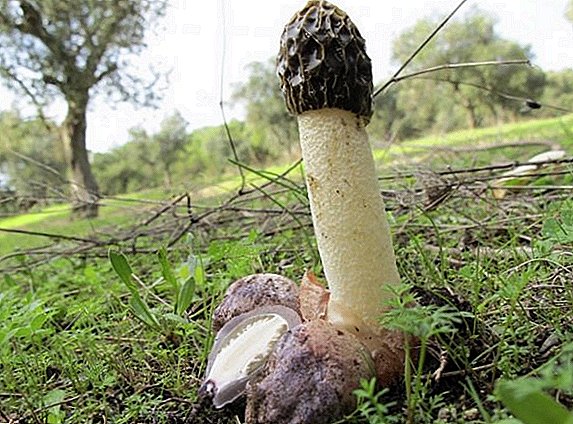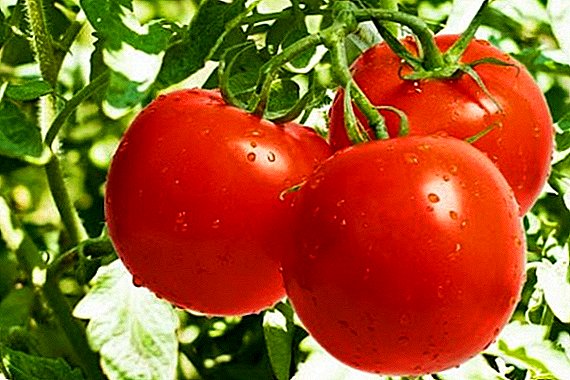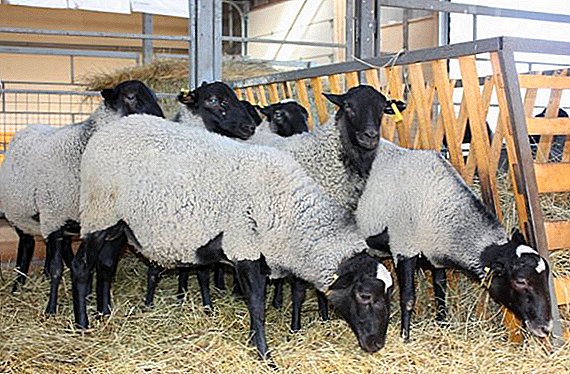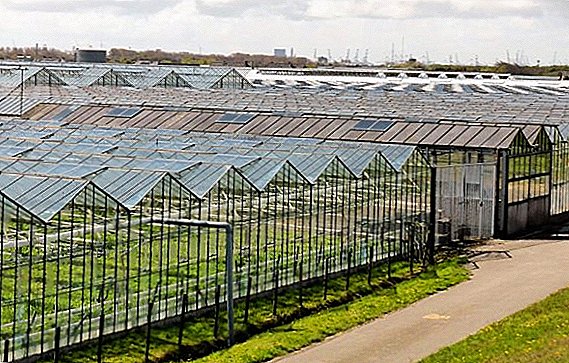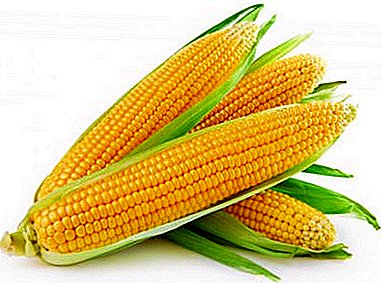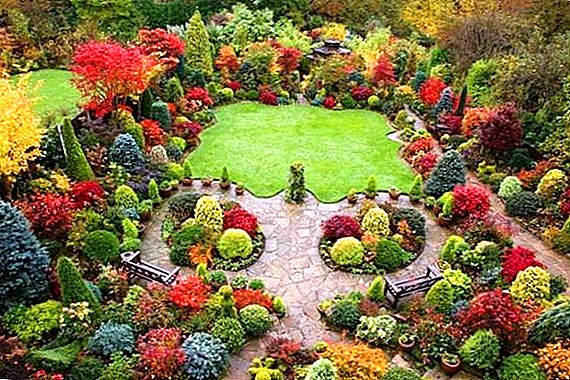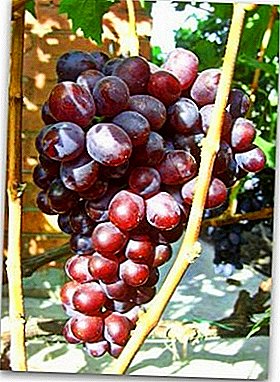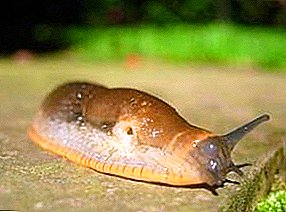
If you go out to your garden or vegetable garden in the morning and find bitten fruits, berries or vegetables, smeared with unpleasant mucus, then there are new uninvited residents in the summer cottage.
These are slugs. They are nocturnalhiding during the day from the rays of the sun under the leaves. Therefore, they are quite difficult to detect. Usually find only traces of their stay. in the form of spoiled plants.
And since garden slugs are omnivorous, most garden and garden crops can become spoiled. Of course, it is impossible to describe all known types of ground slugs, as there are quite a lot of them. we collected the most famous and common. Photos of slugs with the names, see the material.
Types of slugs
Gardening

They are also called bare slugs. They have an elongated body.which can change shape due to muscular contractions. The body is always moistened with mucus, which stands out constantly.
Color ugly - greyish, yellowish and light brown. The tongue is grater - A lot of small cloves of solid consistency, arranged in rows.
The tentacles are located at the forefront, with visual organs located on them. Sizes small - 25-30 mm.
This species can eat different fruits and vegetables, especially loves tomatoes, strawberries, cabbage and strawberries. Distributed throughout Europe. Harm plants, eating leaves and stems, in the fruits and vegetables is making holes. Thanks to his activities, the crop begins to rot, loses its commodity and decorative qualities.
In constantly humid areas (groundwater is almost on the surface, floodplains of the rivers) there is increased fertility. One adult is capable of laying 300-400 eggs. They winter in the ground, the youngsters come out in the spring.
Naked
Small (up to 70 mm in length) and the most frequent visitor to the gardens. Absolutely omnivorous, can eat almost any plants.
Scientists have found that in the diet of a voracious slug more than 160 types of crops are included. Outwardly, completely ugly, thanks to the colors it is difficult to detect.
Torso can be painted brownish, gray or beige color with yellow and white shades. The mantle is weakly expressed, it is almost invisible on the trunk.
The body is abundantly smeared with mucus, which stands out more than in other species. His stay is not difficult to detect due to the large number of slippery tracks left by him.
You can meet this species in almost any part of Europe. What is not surprising - because bare slug is prolific enough for this.
Big european
One of the biggest pests of this family. Big slug boasts a length of up to 150 mm. Coloring is also quite extraordinary.
Over the main background color (gray or brown, sometimes light brown) stripes and spots of different colors from light, almost white to charcoal black are applied.
What are the big slugs look at the photo.
European resident who absolutely does not like to move and change the habitat.
Large roadside or leopard
The length of the body can grow up to 20 cm. One of the largest representatives of slugs. Body wrinkled, mostly rounded, only in the back pointed at the end.
The basic color can vary from light gray to chestnut, often ashy and yellowish slugs. Black spots and stripes are scattered throughout the body..
Look like the big roadside slug on the photo below.

Its main feature is the mating method. Adults attach to trees or other suitable support. with the help of thick strands of mucus and hang down. It seems that they are floating in the air.
Big spotted

A large representative of the family, which can reach 130 mm in length. It is distinguished by the presence of small black dots and specks.covering the mantle.
In addition, it also has a longitudinal black stripe that runs across the entire surface. Torso shape oval, rounded at the ends.
It is widespread in the southern part of Europe and in Asia, as it is quite thermophilic. In colder areas can live in greenhouses and other warm rooms.
It eats various vegetables, but most of all loves mushrooms, especially champignons.
The harm is serious enough due to its large size and a sufficiently long period of life of 3-4 g.
Big black
The biggest black slug in the worldwhich reaches 300 mm in length. The black slug has a black mantle decorated on the edges with small light specks.
The sole of two colors - gray on the sides and black in the center. The color of the body can vary even within the same family and can vary from monophonic to decorated with a wide variety of patterns.
Black Slug dwells in Europe, most often found in western and central. In the northern areas can only live in greenhouses.
Black slug photo.
It feeds mainly on mushrooms, it will not give up vegetables. With no favorite food, there may be lichen.. The large size of the body determines the large appetite and the enormous damage inflicted by the voracious giants.
In laying can be about 100 eggs.
Redhead

Differs in average size, the usual length of about 100 mm, but sometimes grows to 180 mm. It has a very bright color of the trunk. - brick, less often yellow, brownish-green or black.
It lives in Western, Eastern and Central Europe, North America. In many countries, listed in the Red Book.
In nature, he lives next to a man, settling in the fields, in gardens, less often can be found on wooded areas, again close to the human habitat.
Red roadside
The people also called Spanish and Lusitanian. Introduced to Russia by chance lives in warm areas of Europe.
Color monophonic, usually red, brick, orange. The mantle and torso are colored the same. The horns are black. The body is completely covered with wrinkles..
Differs omnivorous, eating and fruits, and berries, and flowers, and vegetables from the garden. Loves mushrooms. Very prolific. All adult slugs are hermaphrodites.
Mating, mutually fertilize each other and lay eggs in 5-6 days in an amount of up to 400 pieces each. Unlike other varieties, egg laying occurs in spring and summeryoung slugs "hatch" in a couple of weeks. They grow up 2 months before the status of a “mature adult individual”.
Cabbage

Despite the relatively short length (3-4 cm), these slugs cause significant harm to all types of cabbage. They settle on the heads and begin to gnaw through a lot of moves inward, not content with spoiling the outer leaves.
The torso and mantle are colored brown or brown. with patches of a darker shade. Spots are not pronounced, arranged in random order. The sizes have various. Horns and head a bit darker.
Found throughout Europe, excluding the northernmost areas. Eats mostly cabbage, but when there is a shortage of your favorite food, you can eat mushrooms, various vegetables and leaves.
Field
The mollusk is small in size, growing in length by 3-4 cm. Color ugly and imperceptible, varies from light gray to light chestnut color.
Usually monophonic and on the body, and on the mantle. Body shape is like a spindle - it is wide in the middle and narrowed towards the ends.
It dwells throughout Europe. He lives on the edges of the forest, in constantly wet lowlands and meadows. Often moved to the gardens, the cultivated fields and gardens.
It feeds on young shoots, foliage, fruits and vegetables. The most favorite food is strawberries.
Smooth
Small clam, growing in length by 25 mm. The mantle is located on the upper half of the body. The color is always monochromatic, the color can be brown, reddish, black. Cylindrical shape, the ends are tapered.
Lives in Europe, including the CIS countries. It settles on always wet meadows, near various reservoirs and on marshes. Differs in increased moisture-loving, resistant to cold..
It feeds on various berries, severely damages plants in greenhousesin nature eats mushrooms and rotted plants.
Forest

Forest slug can grow up to 15 cm in length., and sexual maturity comes already with a length of 3 cm. Young individuals are always painted in chestnut color, which often changes.
The color of adult slugs is very diverse and varies from milky white to blue - black.
Habitat is very extensive and includes the British Isles., the entire Northern part of Europe and the Northwest Pacific Coast.
In food unpretentious, almost omnivorous. Can eat live and half-rotten plants., any mushrooms, carrion.
Banana
It has a huge size, slightly down to the black slug. The length of his body is about 250 mm.. A striking feature is its coloring.
Most often it is a bright yellow color, but some individuals are painted white or green. The color is usually monochromatic, sometimes there are dark specks on the back. On the upper horns are eyes, and lower, shorter, have olfactory receptors.
The homeland of the banana slug is North AmericaThey can be found throughout the Pacific coast, up to Alaska.
In his diet there are mushrooms, lichen and rotten grass, as well as feces of various animals. Depending on the prevailing food, torso can change color.
After fertilization, an average of 70-75 eggs are laying. The rest period is in winterwhen the temperature gets high and the weather is dry.
At this time, the slugs find a dark wet place and hibernate. Seduction saves them from drying out.regularly exuded for protection.
Red triangular

Another exotic guest, this time from Eastern Australia. The appearance is somewhat different from other slugs. It has 2 tentacles instead of 4.
And besides, decorated with a clear red or purple triangle on the mantle. The color of the body is very diverse, found pale pink, milky white, dark or light cream, olive and red individuals.
The large size (up to 150 mm) allows a good look at this handsome man.
For living always chooses wet shady gardens and forests.wasteland. Often they make their way into residential buildings, aiming for bathrooms, where they eat mold. In nature, eating tree lichens, especially on eucalyptus trees.
Orange or brown
It has medium size, growing to 80 mm. The body is colored orange, brown or auburn shade. The mantle is smooth, occupies a third of the body. The body itself is covered with folds and wrinkles.
Not afraid of the cold distributed in Europe, including the Northern part and Siberia in Russia. He chooses forest zones for living, he is suitable for deciduous, mixed, and purely coniferous forests.
Sometimes it can be found in overgrown parks or in an old cemetery, where there are usually a lot of trees.
Reticulate

Small clam, growing from a force of 2-3 cm. The color of the body is specific - a grid-like pattern is scattered on a beige background, which is formed from crossed thin dark stripes. The pattern is most pronounced on the back and the mantle. Tentacles are usually black.
It is found in Eastern Europe, including Russia and the CIS countries. Settled in open areas - landfills, meadows, fields and gardens. Prefers clay soil. In the forest areas does not happen, does not like lush bushes.
Considered the most harmful slugactively spoiling the crop. Loves cabbage the most. Often results in heads in an unsuitable state for consumption, eating numerous passages inside. Read about how to protect vegetables and berries from slugs.
In addition, with an abundance of rain attacks on winter crops.
Conclusion
Despite the harmfulness, gastropods are very popular in modern society. Horned slugs are kept in apartments. as pets.
However, do not get involved in their non-standard attractiveness. and still remember the damage they cause. This you can learn from the material "Methods and ways of dealing with slugs". After reading it you will get acquainted with chemical means and folk methods of struggle with slugs. Also, read our article “Fighting slugs in the cellar (basement).
Useful video!


